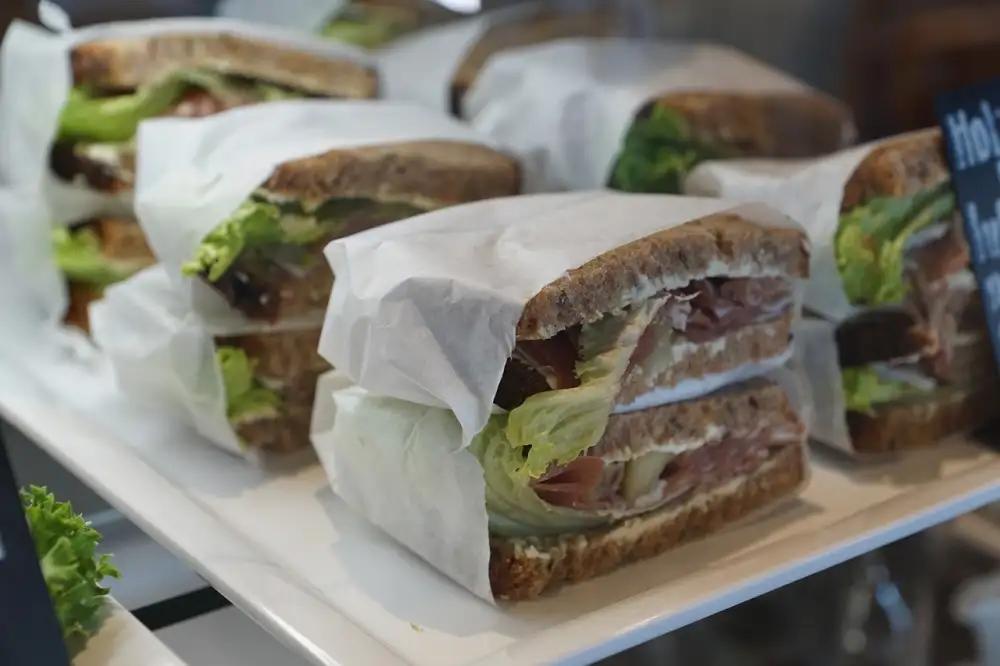Deliciously Divine: Unleash the Magic of Easter Bread with this Traditional Recipe

Easter is a time of celebration, joy, and indulgence in delicious treats. One such treat that holds a special place in the hearts of many is Easter bread. This delectable bread, also known as Pasca or Kulich, is a traditional delicacy enjoyed by various cultures around the world during the Easter season. With its rich history and mouthwatering flavors, Easter bread is sure to delight both young and old alike. So, let's dive into the magic of this delightful treat and learn how to make it at home!
History and Significance of Easter Bread
Easter bread holds a rich history and deep significance in many cultures around the world. Its origins can be traced back to ancient times, where it was often associated with pagan fertility festivals celebrating the arrival of spring. As Christianity spread, the tradition of Easter bread became intertwined with the religious observance of Easter.
In Christian symbolism, Easter bread represents the resurrection of Jesus Christ, making it a staple during the Easter season. The shape of the bread varies across different regions, with some resembling braided wreaths or crosses, while others take on more elaborate designs.
The ingredients used in Easter bread also hold symbolic meaning. Eggs are commonly incorporated into the dough, symbolizing new life and rebirth. Some recipes call for spices such as cinnamon or nutmeg, representing the spices used to anoint Jesus' body before his burial.
Sharing Easter bread with family and friends is a cherished tradition that fosters togetherness and unity. It is often given as a gift or shared during festive gatherings, symbolizing love and goodwill.
By partaking in this time-honored tradition, we not only savor its delicious flavors but also connect with our ancestors who celebrated Easter in similar ways. It serves as a reminder of our cultural heritage and allows us to pass down these customs to future generations.
As we bake and enjoy Easter bread each year, let us remember its historical significance and appreciate the sense of community it brings.
Ingredients Required for Easter Bread
To make a delicious Easter Bread, you will need the following ingredients:
1. Flour: Use all-purpose flour or bread flour for a soft and chewy texture.
2. Yeast: Active dry yeast or instant yeast will help the dough rise and give it a light and airy texture.
3. Sugar: Adds sweetness to the bread and helps activate the yeast.
4. Milk: Provides moisture and adds richness to the dough.
5. Butter: Gives the bread a tender crumb and adds flavor.
6. Eggs: Essential for binding the ingredients together and adding richness to the dough.
7. Salt: Enhances the flavor of the bread and balances out the sweetness.
8. Vanilla extract: Adds a subtle hint of vanilla flavor to enhance the overall taste.
9. Raisins or dried fruits (optional): Traditional Easter bread recipes often include raisins or other dried fruits for added texture and sweetness.
10. Candied citrus peel (optional): Adds a burst of citrus flavor and vibrant color to the bread.
Make sure you have these ingredients on hand before starting your Easter Bread baking adventure!
Step-by-Step Instructions to Make Easter Bread
1. In a large mixing bowl, combine 4 cups of all-purpose flour, ½ cup of sugar, and 2 teaspoons of instant yeast. Mix well.
2. In a separate bowl, whisk together 3 eggs, ½ cup of melted butter, and 1 teaspoon of vanilla extract.
3. Slowly pour the wet ingredients into the dry ingredients while stirring continuously. Mix until a sticky dough forms.
4. Turn the dough onto a floured surface and knead for about 5 minutes until it becomes smooth and elastic.
5. Place the dough in a greased bowl, cover it with a clean kitchen towel, and let it rise in a warm place for about 1 hour or until it doubles in size.
6. After the dough has risen, punch it down gently to release any air bubbles. Divide the dough into three equal parts and roll each part into a long rope.
7. Braid the ropes together by crossing them over one another, starting from the middle and working towards each end.
8. Transfer the braided bread onto a baking sheet lined with parchment paper. Cover it again with a kitchen towel and let it rise for another 30 minutes.
9. Preheat your oven to 350°F (175°C). Brush the top of the bread with an egg wash made by whisking together one egg yolk and one tablespoon of milk.
10. Bake the Easter bread for approximately 25-30 minutes or until golden brown on top.
11. Once baked, remove from the oven and let it cool completely on a wire rack before serving.
Follow these simple steps to create your very own delicious Easter bread that will surely impress your family and friends!
Tips and Tricks for Perfect Easter Bread
1. Use fresh ingredients: Make sure your yeast, flour, and other ingredients are fresh to ensure the best results.
2. Activate the yeast: Dissolve the yeast in warm water with a pinch of sugar before adding it to the dough. This helps activate the yeast and ensures a good rise.
3. Knead well: Properly kneading the dough is essential for developing gluten and creating a light, airy texture. Knead until the dough becomes smooth and elastic.
4. Allow enough time for rising: Give the dough enough time to rise properly. This allows for better flavor development and a lighter texture. Follow the recipe's instructions for rising times.
5. Keep an eye on temperature: Be mindful of the temperature when proofing or baking your bread. Too high of a temperature can cause overproofing or burning, while too low of a temperature may result in underproofing.
6. Brush with egg wash: Before baking, brush your Easter bread with an egg wash mixture (beaten egg + milk) to give it a beautiful golden color and shine.
7. Decorate creatively: Add colored sprinkles, candied fruits, or even dyed hard-boiled eggs to make your Easter bread visually appealing and festive.
8. Don't rush cooling: Allow your Easter bread to cool completely before slicing or serving. This ensures that it retains its shape and prevents it from becoming gummy.
Remember, practice makes perfect! Don't be discouraged if your first attempt isn't flawless – keep trying, experimenting, and enjoying the process of making this delicious Easter treat!
Variations and Additions to Easter Bread
While the traditional recipe for Easter bread is undeniably delicious, there are also several variations and additions that can be made to enhance its flavor and appearance. Here are a few ideas to consider:
1. Raisins and Nuts: For an extra burst of sweetness and texture, add a handful of raisins or chopped nuts such as almonds or walnuts to the dough. This will give your Easter bread a delightful crunch and added richness.
2. Citrus Zest: To infuse your Easter bread with a refreshing citrusy aroma, try adding some lemon or orange zest to the dough. The bright flavors will complement the sweetness of the bread beautifully.
3. Chocolate Chips: For all the chocolate lovers out there, why not incorporate some chocolate chips into your Easter bread? The melted chocolate will create pockets of gooey goodness throughout the loaf, making it even more irresistible.
4. Spices: Experiment with different spices like cinnamon, nutmeg, or cardamom to give your Easter bread a unique twist. These warm spices will add depth and complexity to the flavor profile, making each bite truly memorable.
5. Decorative Toppings: Get creative with decorative toppings like colored sprinkles or pearl sugar before baking your Easter bread. This will not only make it visually appealing but also add a delightful crunch to every slice.
Remember, these variations are just suggestions - feel free to mix and match ingredients according to your personal preferences! The beauty of Easter bread lies in its versatility, allowing you to customize it based on your taste buds' desires.
By exploring these variations and additions, you can put your own spin on this beloved tradition while still honoring its roots. So go ahead, unleash your creativity in the kitchen and enjoy the magic of Easter bread in all its delicious glory!
Serving and Storing Easter Bread
Once your Easter bread is baked to perfection, it's time to serve and enjoy this delightful treat. Traditionally, Easter bread is served as a centerpiece during the Easter meal or as a sweet addition to breakfast or brunch. It can be enjoyed on its own or paired with butter, jam, or honey.
To store your Easter bread, wrap it tightly in plastic wrap or place it in an airtight container. It can be kept at room temperature for up to 3 days, but for longer storage, it is best to refrigerate or freeze it. If refrigerated, make sure to bring it back to room temperature before serving.
If you have leftovers, don't worry! Easter bread can be transformed into delicious French toast or bread pudding. Simply slice the bread and use it as you would any other type of bread in these recipes.
Remember that Easter bread is not just a delicious treat but also a symbol of tradition and celebration. So savor each bite and share the joy of this special bread with your loved ones during the Easter season.
Easter bread is not just a delicious treat; it is a symbol of tradition and celebration. By following this traditional recipe and putting your own spin on it, you can create a masterpiece that will delight your family and friends. Whether you choose to make a classic loaf or experiment with different flavors and additions, the process of making Easter bread is a labor of love that brings people together. So this Easter, unleash the magic of Easter bread and enjoy the joyous tradition it represents. Happy baking!
Published: 18. 12. 2023
Category: Home



